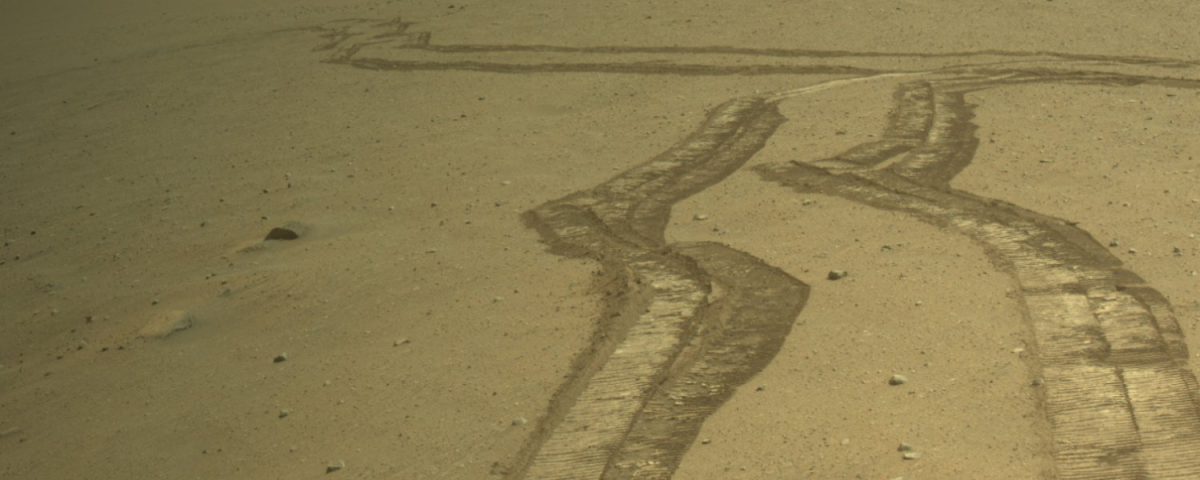Perseverance Rover Escapes Its Giant Martian Crater. Here’s What Happens Next
Perseverance Rover Escapes Its Giant Martian Crater. Here’s What Happens Next
The rover trekked nearly 2,000 feet to get out of the crater, where it will explore a 4-billion-year-old environment.
Full Article
Well, look at that. The Perseverance rover has clambered out of the crater that’s been its cradle for nearly four years on the Red Planet. Perseverance landed on Mars in February 2021. The rover is charged with looking for biosignaturesâevidence that the inhospitable world was not only once capable of supporting life, but actually did. To quickly sum what the rover has been up to: Percy has been toiling on the Martian surface for the past 3.5 years. In its tenure, the rover has drilled into rocks, taken images of the Martian surface and the Mars helicopter Ingenuity, and compiled a collection of rock samples that will hopefullyâ somedayâbe brought to Earth for study. The rover landed in Jezero Crater, which once held a large lake. The crater was formed by an impact event some 3.9 billion years ago. On the crater’s western edge was a river delta, which contains compelling rocks that researchers are eager to study on Earthâeventually. In a session held yesterday at the annual meeting of the American Geophysical Union, Perseverance project scientists discussed Perseverance’s new environment, and what’s in store for the rover as it continues its trek across the rusty terrain. Briony Horgan, a planetary scientist at Purdue University and co-investigator on the Perseverance mission, hopped on the phone with Gizmodo to discuss what’s next. “On the crater rim itself is terrain that was uplifted by the impact,” Horgan said. “What’s really exciting about that is that we’re now above the place where there was standing water. We can actually see the rocks that were there before the impactâreally ancient stuff.” The name of the game for Perseverance is: weird rocks. The rover team has been imaging and sampling bits of the Martian terrain that have strange appearances or chemical compositions, such as the “leopard spot” rocks revealed in July. These rocks could offer hints at ancient life, but also the evolution of Mars itself. Since ancient Mars is theorized to have been Earth-like, these rocks can shed light on how our world ended up verdant and wet and Mars ended up soâwellâMartian. “One of the reasons we’re excited about the crater rim is that impact craters generate heat from this big impact,” Horgan said. “It drives hydrothermal systems through the crust, and those are really habitable environments.” The Perseverance samples will be game-changing, allowing scientists to interrogate Mars’ ancient past in a way that is very difficult, if not impossible, to do remotely with a rover from over 100 million miles away. As Perseverance peers into Mars superlatively ancient past, scientists can glean information about its ancient potential to host microbial life and the way the planet became the arid, rocky, windswept world we know today. “These are one-of-a-kind samples that will teach us about almost every aspect of the early solar system and how planets evolve,” Horgan said, “and they’ll keep doing that for decades to come.” It’s a shame that we’ll have to wait for NASA to find the funding and the right plan to bring the samples homeâit’s hard to hold ones’ breath for more than a minute, much less yearsâbut the wait will surely be worth it. Until then, there are plenty of insights to be gleaned remotely, as Perseverance begins its work with some of the solar system’s most ancient rocks.
cratersExploration of Marsmars explorationMars roversPerseverance
Get the best tech, science, and culture news in your inbox daily.
News from the future, delivered to your present.
Please select your desired newsletters and submit your email to upgrade your inbox.
The otherworldly helicopter, with its 36 blades, is the size of an SUVâa major upgrade from Ingenuity’s four blades.
The intrepid Mars helicopter broke down in January 2024, and the space agency now knows why.
Flashes on our natural satellite’s surface suggest the annual Geminids meteor shower isn’t just making an impact on Earth.
Scientists have identified surprising weather patterns underlying Mars’ notorious dust storms.
The two robots, working alone and far apart from one another, are struggling on their respective treks along the Red Planet’s rough terrain.
The rocks indicate an ancient, iron-rich environment, but the rover wasn’t able study details of the rock’s composition.
The Best Tech Gifts of 2024 â We may earn a commission when you buy through links on our sites.
©2024 GIZMODO USA LLC. All rights reserved. Mode
Follow us
Mode
Follow us



